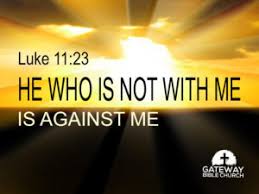Our culture is highly visual. It’s hard to believe that anyone lecturing today would not draw on the myriad of audiovisual aids available. Visuals are powerful. They say things that words cannot say. As the saying goes, a picture is worth a thousand words. Pictures reach places that words may fail to reach, penetrating the closed mind or imagination allowing us to see things that words might only obscure.
This passage is probably
the most strategic text for explaining why Jesus performed miracles. In some miracle stories considerable attention is given to
the occasion, setting and nature of the miracle. In Luke 11:15-26 all these elements appear in a single verse. It is a miracle story turned upside-down in
which it’s less the miracle and more the commentary on the miracle that counts.
Here scripture departs from the standard form and uses the miracle as its own
series of metaphors for the source of Jesus’ message.
As Jesus makes his way
to Jerusalem Luke deals with religious leaders’ question regarding the source
of his healing power. Not willing to accept Jesus Divinity as the source of his
power, they ascribe it to Satan. In the midst of this growing opposition there
is the call to know what miracles mean and to understand the times.
Two options are
suggested by those who have doubts. First, some attribute his capabilities
to Beelzebub, the prince of demons. They clearly have Satan in
mind and imply strongly that Jesus is demonically controlled.
The second alternative
is a wait-and-see approach. Some want more proof through some sign from
heaven. It is unclear what this might have involved a heavenly sign or
just more miracles? In any case, not all are persuaded that demonic control is
the answer.
These two possibilities
well summarize reactions to Jesus today. Some reject him; others want to see
more from him. But clearly, those who were exposed to Jesus realized that they
could not ignore his actions or claims. His ministry demanded that people
consider his identity.
For those who believe, know proof is necessary; for those who don't, no proof is necessary. Stuart Chase

No comments:
Post a Comment